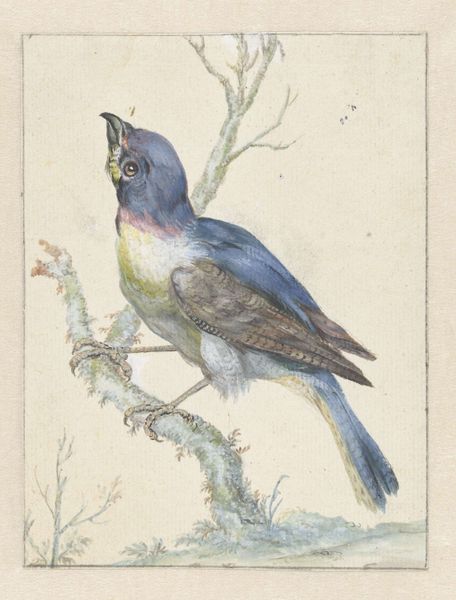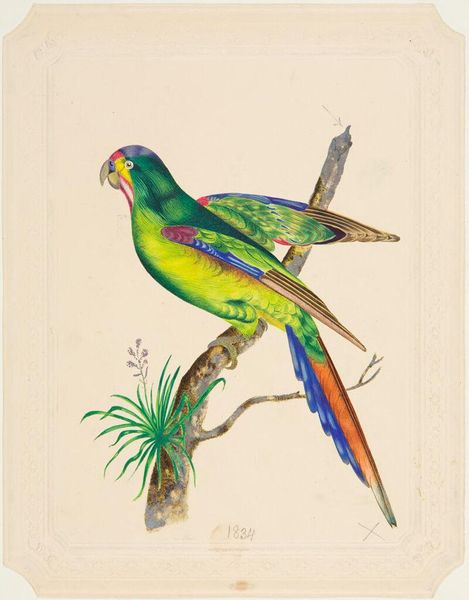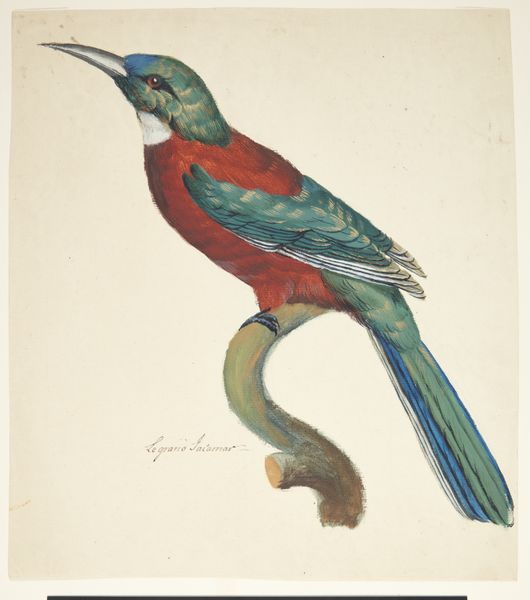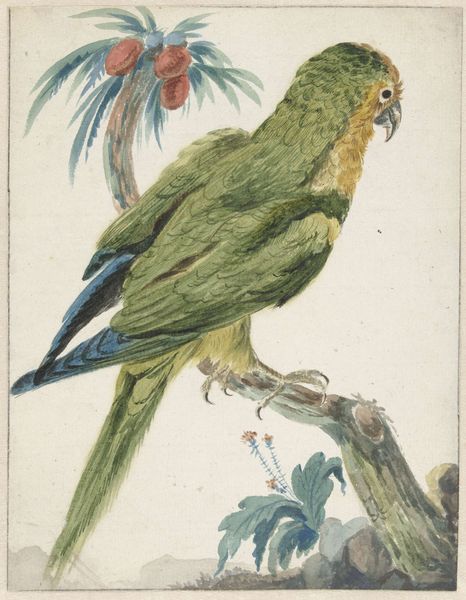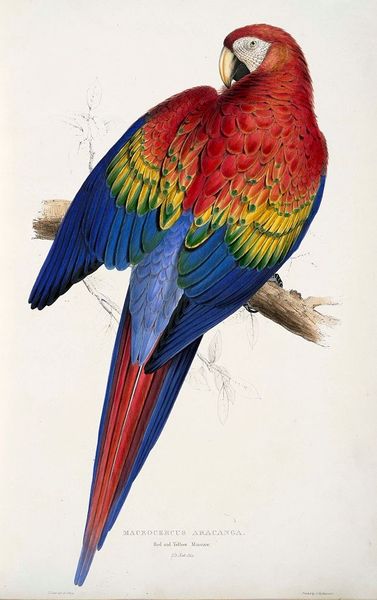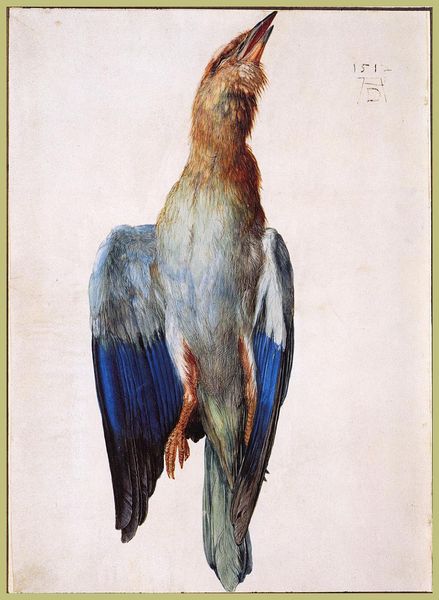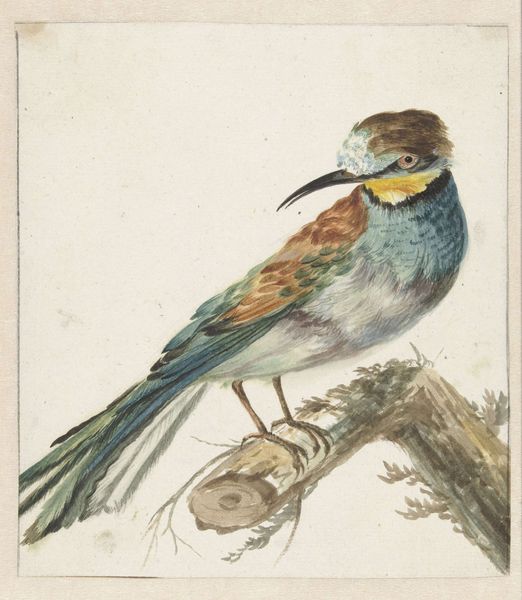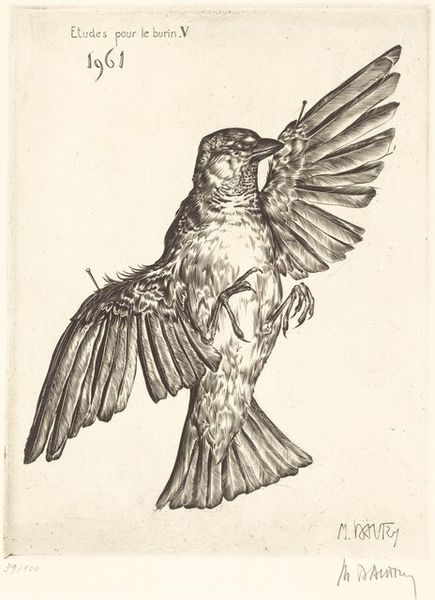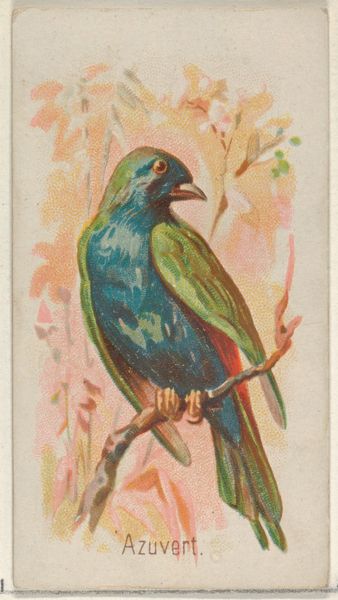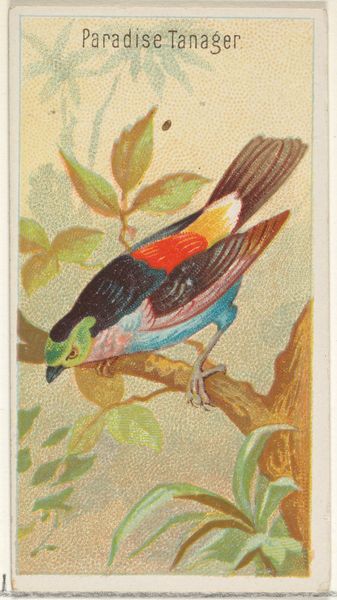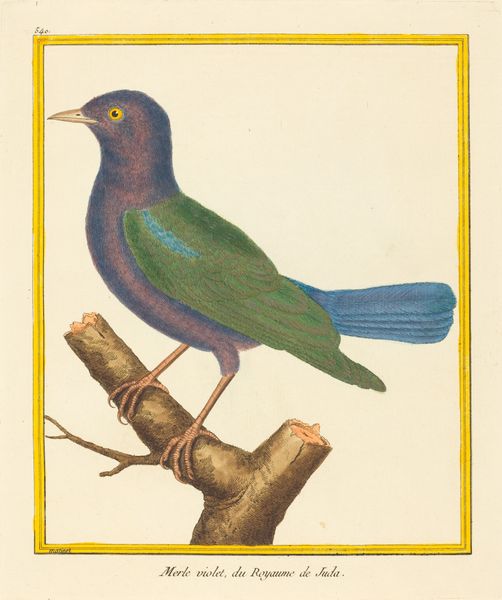
Dimensions: support: 99 x 178 mm
Copyright: CC-BY-NC-ND 4.0 DEED, Photo: Tate
Editor: Here we have Georgina Macdonald's "Dead Bird," currently housed at the Tate. Its small size makes it feel so intimate. What strikes me is the vibrant colour palette juxtaposed with the stillness of the subject. What do you make of this piece? Curator: It's interesting you noticed that contrast. During Macdonald's time, natural history illustrations were gaining popularity, but often served colonial agendas, framing nature as something to be cataloged and controlled. How might this intimate, yet unsettling, depiction challenge that public perception? Editor: So, it's not just a pretty picture of a bird; it's a commentary on our relationship with nature itself? Curator: Precisely! The vivid colours could be seen as celebrating the bird's life, while its stillness forces us to confront our own mortality and impact on the natural world. Editor: That adds a whole new layer of meaning. Thanks for sharing that. Curator: My pleasure. It's always rewarding to reconsider how historical context shapes our present interpretations.
Comments
Join the conversation
Join millions of artists and users on Artera today and experience the ultimate creative platform.
tate 7 months ago
⋮
Georgina Macdonald painted Dead Bird when she was 17 years old. She trained at the Government School of Design, London. This detailed, life-sized execution reflects both contemporary interest in natural history, a common pursuit for educated young women at the time, and the artist’s studies with the progressive painter Ford Madox Brown. The bird, a Green-Headed Tanager (Tangara seledon) had been brought from South America. Macdonald had joined the Pre-Raphaelite circle at the age of 15, and was influenced by the critic John Ruskin who encouraged artists to focus on the appearance and significance of nature and natural forms. Gallery label, October 2013
